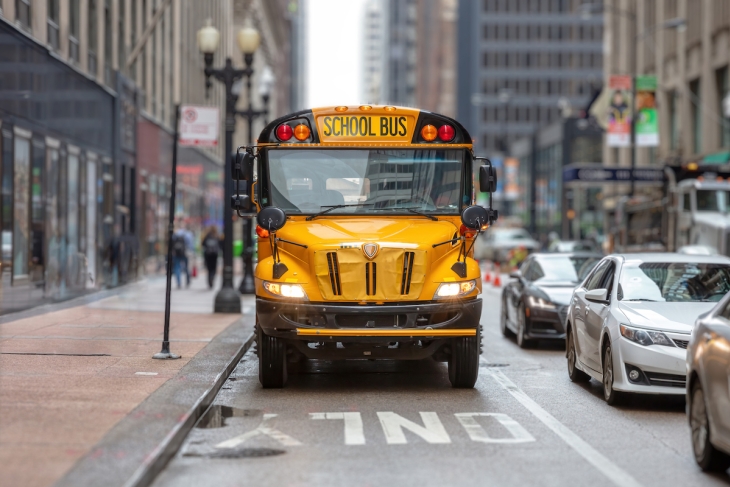In an effort to expand educational opportunity, several large urban school districts—including Boston, Chicago, New York City, and Washington, D.C.—have increased school choice within traditional public school systems through intradistrict open enrollment. But do such programs, which allow students to choose schools throughout the district, actually improve outcomes? In a recent working paper, researchers from MIT and the University of Chicago investigate the consequences of transporting students to non-neighborhood district schools.
The causal study, one of only a handful to consider the relationship between school commute time and academic performance, analyzes both the integration effects and the academic effects of transporting Black and Hispanic students to district schools throughout Boston and New York City. In addition to offering school choice within traditional public school systems, these two urban districts share key features. First, both foot the bill for transportation costs for students attending non-neighborhood schools: Boston choice middle schoolers ride yellow buses, and choice high schoolers in both cities receive monthly public transit passes. In addition, both districts have historically been sites of conflict over school integration. Although integration is not an explicit aim of their choice programs, the researchers still sought to determine whether they mitigated the enduring influence of residential segregation on school segregation.
The study uses Boston data for all applicants for sixth and ninth grade district schools from 2002 to 2013, and New York City data for all applicants for ninth grade district schools from 2012 to 2016. It tests the effects of two factors: first, whether the student attended a non-neighborhood school (a yes/no variable), and second, the student’s commute length in minutes. To measure integration, the researchers use same-race peer enrollment and minority isolation (that is, attendance at a school with at least 90 percent Black or Hispanic students). A combination of statewide end-of-year math and English language arts test results, SAT scores, and college enrollment data serve as measures for academic outcomes. Since students who were already more academically motivated could have been more likely to seek out a non-neighborhood school, the researchers designed their methodology to account for the possibility of such selection bias.
In both Boston and New York, traveling to a non-neighborhood school clearly boosted integration. The largest statistically significant effect was on Black students in Boston, where non-neighborhood enrollment led to Black students experiencing a nearly 17 percent drop in minority isolation. In New York, the effect was largest for Hispanic students, for whom minority isolation decreased by almost 8 percent. On the other busing measure, traveling to school for an additional twenty minutes also led to greater integration, particularly for Black students, whose same-race peer exposure decreased by approximately 6 percent in Boston and 7 percent in New York.
The effects of commuting on test scores and college attendance, however, were minimal. Perhaps-surprising exceptions were for Black students in Boston and Hispanic students in New York, for whom twenty additional minutes of travel time decreased college attendance by 6 percent and 4 percent, respectively. (The troubling finding that Black students in Boston simultaneously experienced the greatest gains in integration and the largest drop in college attendance merits further investigation.) In the study’s final step, the researchers use what they call a value-added model to ascertain that the small effects on education outcomes are due to negligible differences in the quality of the students’ neighborhood and choice non-neighborhood schools—rather than a result of factors like fatigue from long commutes.
At least for Boston and New York, these findings complicate the argument for intradistrict school choice. On the one hand, allowing students to travel throughout the district advances progress toward the inherently worthy goal of increased school integration. Choice also comes with its own value; students in both districts can, for instance, select themed schools, which could affect student engagement in ways not necessarily captured in the study. On the other hand, considering the slightly negative academic impact of these commutes, along with annual transportation costs of $1,020 per Boston student and $1,300 per New York student, the authors urge us to ask whether these funds could be more productively spent on improving neighborhood school quality. Given these tradeoffs, district leaders must decide how best to allocate inevitably finite resources to serve their students’ needs.
SOURCE: Joshua Angrist, Guthrie Gray-Lobe, Clemence M. Idoux, and Parag A. Pathak, “Still Worth the Trip? School Busing Effects in Boston and New York,” National Bureau of Economic Research Working Paper Series (July 2022).


